Do you find it stressful and hard to entertain in your home because of your dog?
Some dogs aren’t too phased by visitors coming over while for other dogs a new visitor in the house can mean lots of things… Some dogs are very excitable and will jump on your guests, some will just want to lick them and get their attention, whilst some dogs may become incredibly stressed and anxious. Some dogs love to bark when the door-bell rings and some dogs are so food-obsessed they can’t relax if people are eating. Whatever it may be, I am going to give you my tips today to help with managing your dog when you have visitors and children coming over.
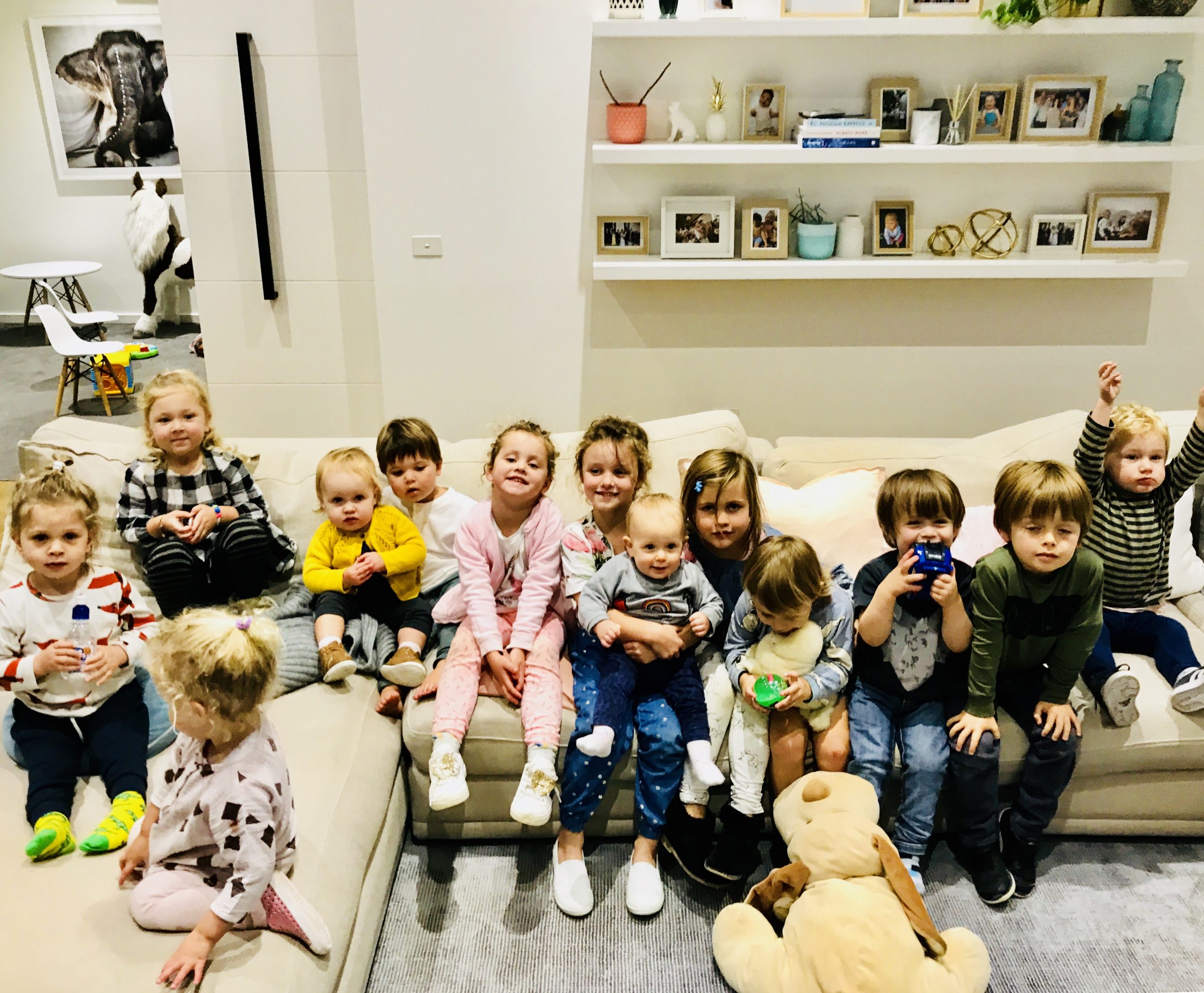
I am writing this article because of two conversations I literally just had. I was chatting to a friend the other day who has a toddler and a very excitable dog. She was telling me that she doesn’t entertain as much as she’d like because she finds it hard to manage her dog when people come over. The other conversation was a mum at a birthday party telling me she’s not really a dog person, and every time she goes to one of her friends’ houses who has a very boisterous dog, she finds it very unpleasant as she wished her friend would realise not all people are dog people and to be a bit more respectful. As a mum of two young kids and quite a boisterous, food-obsessed dog, I absolutely understand both sides.
The bottom line is (and sometimes it’s very hard for us “dog lovers” to remember) that not everyone loves dogs like we do – I know it’s hard to believe. So, you need to be mindful of this, especially when you have non-dog people coming over to your house. You need to be respectful of others, have some management tools in place and teach your dog some manners when you have visitors coming over, especially when they are children. Here’s how…
Preparing your dog for when your visitors arrive.
Step 1. Decide the following:
- Where will your dog be when guests knock or ring the doorbell? – In his crate? In his confinement area? On leash? Stationed on his mat/bed?
- How will you introduce your dog to guests? – Ask for a sit? Keep him on leash? Or keep him in his confinement area and introduce him once everyone is inside and settled?
- How will you reward your dog for greeting guests politely? Offer him a treat? Allow him to mingle freely? Give him a lickimat to help calm himself down.
- What behaviours does your dog know that might be helpful? – Sit? Down? Stay? On your bed?
If you are unsure of how to train your dog how to do these behaviours, have a read of this article – Five Important Skills to teach your Dog when Around Young Children
Click here for a great resource from Family Paws for different management ideas .
Step 2. First, practice without guests. Get out your dog’s mat, treats, etc. Have someone ring the doorbell, and go through whatever plan you have settled on. Practice a sit by the door, for example.
Step 3. Next, invite a friend or family member over and practice your visitor routine. Start small—one person first, then, once that is going well, invite a couple of people.
Now let’s take you through an example of having a group of visitors over, once you have prepared your dog for their arrival.
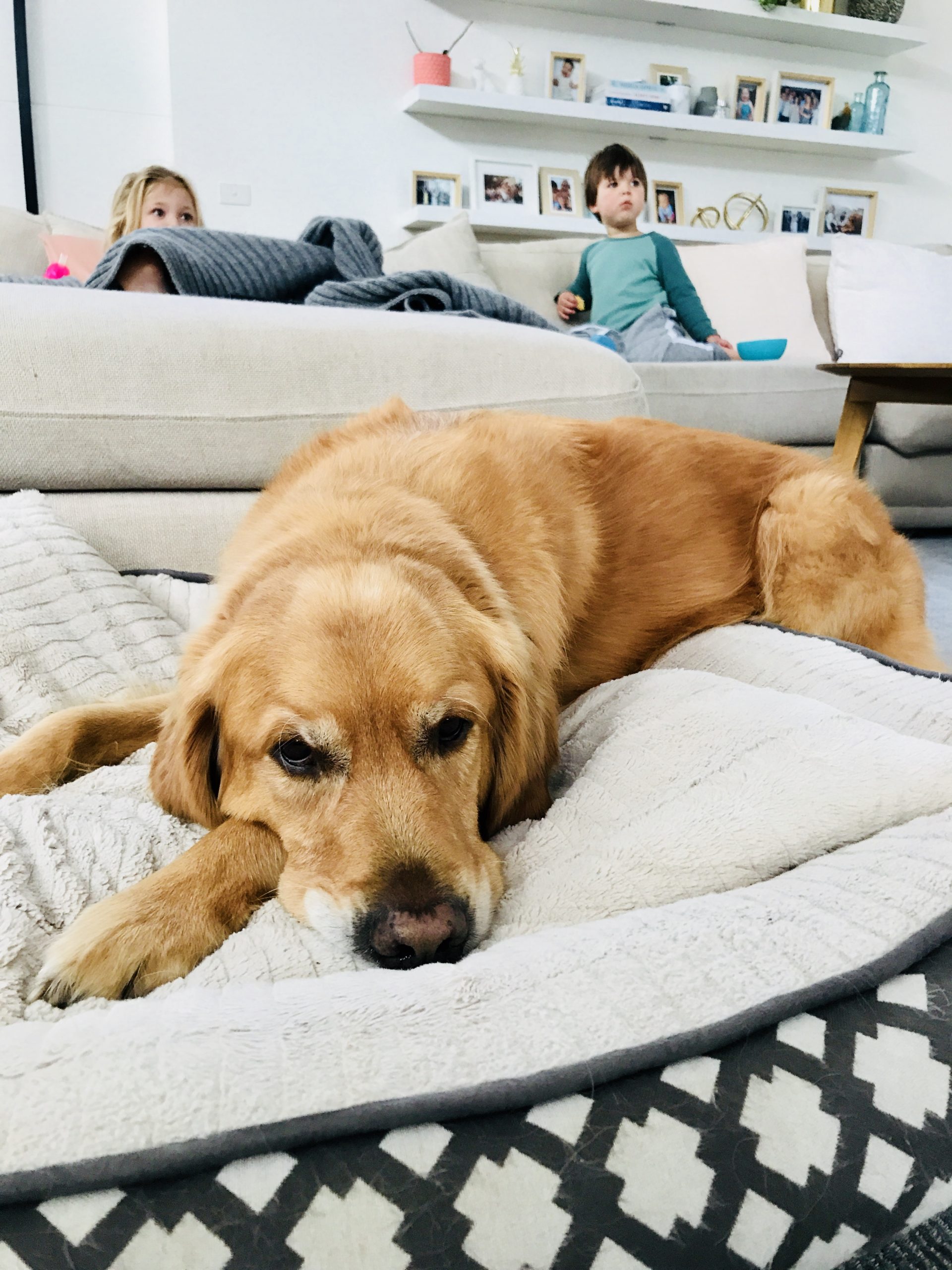
Managing your Dog when having Visitors and Children Coming Over.
Stage One: Before your guests arrive
If possible, make sure your dog has been for a good walk or done some good exercise to get out some energy before your guests arrive. The idea here is that the more tired, well-exercised, mentally stimulated your dog is before guests come over, the more calm he may be. But don’t be fulled, this is not always the case, especially for dogs who are stressed or anxious. But it’s worth a try, especially for those very excitable dogs.

Stage Two: When guests arrive.
Based on what you have practised with your dog in the preparation phase above… Go with that plan. Just make sure to be organised before guests arrive – i.e. pop your dog in his crate or put the lead on before the doorbell rings if you can. And if not, your guests can wait a few minutes whilst you get organised. Always set your dog and yourself up for success. Once you’re ready, make sure you have your treats, so you can reward your dog for doing the behaviours you have planned and it’s now time to let your guests in.
Stage Three: During their Visit.
Use Management tools for your dog when around visitors and children.
Even though we all love our dogs dearly and expect everyone else to, this is not always the case. Some children might be afraid of dogs. Some parents might not like their children being licked by dogs or being jumped on by dogs. Even though you might tolerate these behaviours, other people might not like it. So, if your dog doesn’t settle once your guests have arrived or it’s just too much to juggle and you are unable to be actively supervising your dog around children, use your management tools for the duration of the time your guests are over! Keep your dog on lead. Put your dog in his crate or play pen. Or put him outside. Make it positive and give him a favourite chew toy, lickimat or a nice treat dispensing toy. Don’t be afraid to do this. And don’t see it as punishment. Dogs can often get stressed out with lots of young children or visitors around. So you’re actually doing your dog a favour. Tell him, “I’ve got this” and give him a nice treat. Once he’s finished, hopefully, he’ll be able to relax.
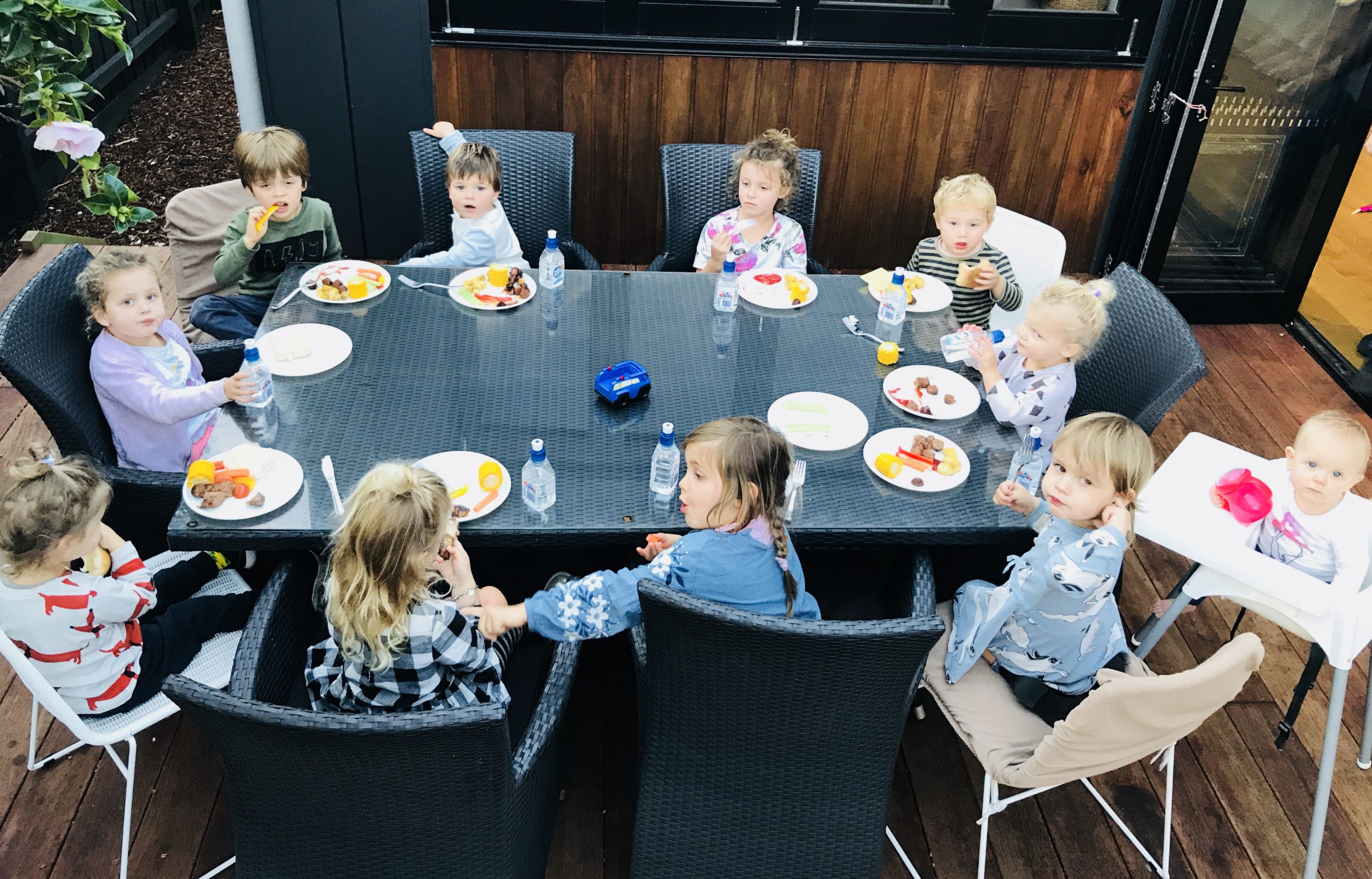
If safe to do so, test out those manners you have taught your dog.
If your dog settles nicely once your guests have arrive it is important that your dog learns some manners around other people. So if your dog knows some of the skills mentioned above and as long as it is safe, you can be actively supervising, and your visitors are ok with it, let your dog roam freely and see how he goes. Ask him to sit or down or to go to his bed, if he looks unsure of what to do. Utilise those manners you have taught him and praise praise praise him when he is doing well.
Click here for what Active supervision looks like.

If you know your dog just doesn’t cope well with lots of people, see if a family member or a friend can have your dog for a couple of hours.
For situations when you feel your dog is too anxious or your fearful of how your dog is going to react with visitors, or you just have a whole lot of people coming over, see if someone can look after your dog for a few hours. Again, this isn’t a cop-out, but rather a situation where you are having your dogs back and looking after their best interest and perhaps also the safety of others.
A few weeks back we had 25 people coming over in the arvo for a kids dinner. 10 of those were toddlers!! As well as I can train my kids to sit and eat, I can’t train other peoples’ kids. I know as good as Cooper is, that when there are that many kids running around eating their dinner, he just can’t relax. So we made the call to take him to my in laws house for a few hours. As much as I prefer to have him home, I know my dog and I know he will be much happier spending a few hours out of the house.
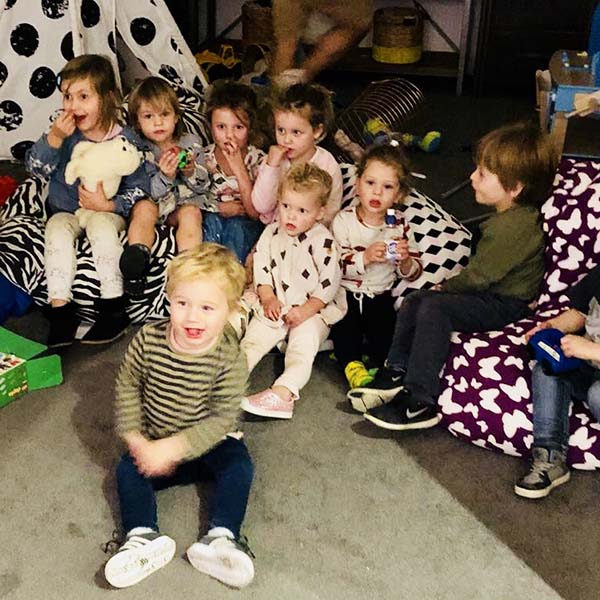
Stage 4: Once everyone has left.
After your guests leave, assess how the visit went.
- What did your dog do well?
- What needs extra practice?
- Is there anything you want to do differently next time?
Also make sure that any food scraps on the ground are safe for dogs and if they are, let you dog clean them up, if he hasn’t already! Save you having to get out the vacuum cleaner.
If you think your dog is a risk to your children, please seek the help from a rewards-based positive dog trainer/behaviourist ASAP. Finally, and MOST IMPORTANTLY never ever leave a child and dog alone and unattended. Always make sure to actively supervise and step in if you feel the dog is uncomfortable or the child is at risk.
For more info on child and dog safety and how dogs communicate make sure to have a read of these articles:
- How Dogs Communicate
- Three steps to Teach your child how to safely say hello to dogs
- Teach your child to interact safely with dogs and know the warning signs to look for
- Five Important Skills to teach your Dog when Around Young Children
- Lead by example to show your child how to interact safely with dogs
If you have any questions on this topic or would like some help or guidance with any of it, please feel free to leave a comment below or send me an email. Please spread the word and share this article around to all dog owners.
Mel xox
PS. Make sure to head to our SHOP if you haven’t already! Spoil yourself and your dog!!


Comments (2)
Liz Soryal November 22, 2023 at 11:59 pm
My daughter in Australia has just moved to a house with a swimming pool. She has a daughter Holly 2.5 years, and a bull Arab crossbreed dog Emmy. The dog has always been great around Holly and not aggressive towards her at all, but has issues around some other dogs, bikes etc and is ball obsessed and easily overaroused. When Holly is in the pool, Emmy gets crazy, barking excessively and has tried to ‘rescue’ Holly on several occasions. How does my daughter let Emmy know that she is not responsible for Holly and doesn’t need to protect her. The situation seems worse if she tries to confine Emmy to the house when they are using the pool – Emmy just gets frantic. Many thanks for any advice
Cooper and Kids January 15, 2024 at 5:12 pm
Thanks for the message liz! Let your daughter know that i can help her – tell her to send me an email to mel@cooperandkids.com .